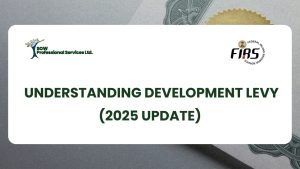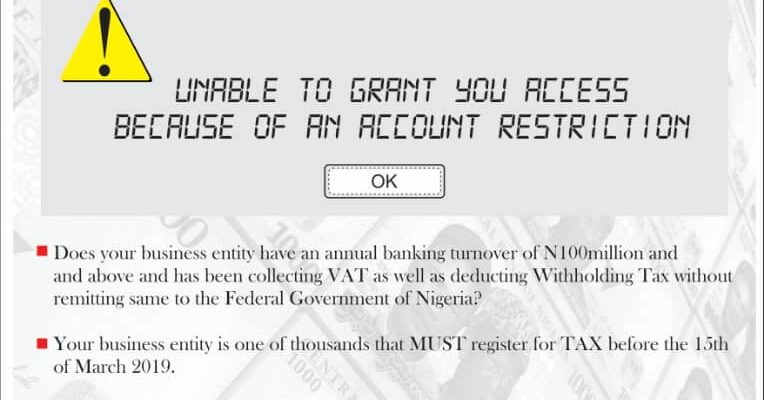Development Levy in Nigeria (2025 Update)
Is it fo r state, federal, or both?
r state, federal, or both?
Understanding the development levy at both the state and federal levels has become a major concern after Nigeria’s sweeping tax reforms were signed into law on June 26, 2025, leaving taxpayers unsure about how the dual levies interact. Many now fear possible double taxation or assume one levy has replaced the other, yet they remain entirely separate obligations with different legal bases, payers and objectives. This guide breaks the issue down clearly, helping you navigate the new landscape with confidence and offering practical steps for smooth compliance in 2026 and beyond.
What is the Development Levy in Nigeria?
A development levy in Nigeria is a mandatory contribution designed to fund public infrastructure, social services, and economic growth initiatives. At its core, it is a fiscal tool that channels resources toward community and national development projects, such as roads, education, and security enhancements.
The confusion arises from the 2025 reforms: the Nigeria Tax Act (NTA) introduced a federal Development Levy, consolidating several existing federal levies into one, while the state Development Levy, rooted in pre-1999 legislation, remains intact and unaffected. This overlap in terminology has led to misconceptions about abolition or merger, but the two coexist independently.
Anyone navigating Nigeria’s tax system should grasp this distinction: individuals and small businesses primarily deal with state levies, while larger companies must prepare for the federal addition. Tax practitioners, HR professionals, and compliance officers are especially urged to update their knowledge to guide clients effectively.
The Original Development Levy: State-Level Taxation
with it legal basis in The Taxes and Levies (Approved List for Collection) Act Enacted as Decree No. 21 of 1998 (now Cap. T2, Laws of the Federation of Nigeria, 2004), this Act delineates permissible taxes and levies across government tiers to curb multiplicity and jurisdictional overlaps. The state Development Levy falls under the states’ constitutional authority per the Third Schedule, Part II of the 1999 Constitution (as amended), empowering states to impose levies for local development. This framework ensures states retain fiscal autonomy for grassroots projects, distinct from federal impositions.
Who Pays the State Development Levy?
The levy targets a broad base:
- Individuals: Working residents in the state often have deductions via Pay-As-You-Earn (PAYE) by employers.
- Businesses: Registered entities, including sole proprietorships and partnerships, based on operations within the state.
Collection is handled by state revenue authorities, such as the Lagos State Internal Revenue Service (LIRS) in Lagos, which integrates it into annual tax filings or direct assessments. In Lagos, for instance, LIRS audits and enforces via employer remittances, ensuring seamless integration with personal income tax.
State Development Levy Rates and Calculation
Rates vary by state, reflecting local economic contexts. They typically range from ₦100 to ₦500 annually per individual, though businesses may face higher scaled fees. Calculation is straightforward: for individuals, it is a flat fee on taxable income brackets; for businesses, it is often a percentage of turnover or premises value.
Payable annually, often bundled with state PIT returns by March 31 (for the prior year). In Lagos, non-compliance incurs penalties up to 10% plus interest.
What is the NTA 2025 Development Levy?
The NTA 2025, signed June 26, 2025, introduces a unified federal Development Levy to streamline fragmented sector-specific charges, funding national priorities like education, infrastructure, and security. Its purpose: reduce administrative burdens by consolidating levies into a single, efficient mechanism, effective January 1, 2026.
What Taxes Does the Federal Development Levy Replace?
This levy absorbs and repeals:
- Tertiary Education Tax (TET): 2.5% on assessable profits.
- Police Trust Fund Levy: 0.5% on profits.
- NASENI Levy: 1% for science and engineering infrastructure.
- NSIA Levy: Contributions to the Nigeria Sovereign Investment Authority (though some sources note NITDA/IT Levy as an alternative; the rationale remains consolidation).
The goal? Eliminate overlaps, reduces tax admisistration complexities, and channeling funds into a special account for equitable distribution to beneficiary agencies.
Who Pays the Federal Development Levy?
Exclusively companies (resident and non-resident with Nigerian presence), excluding:
- Small companies (turnover ≤ ₦50 million and fixed assets ≤ ₦250 million).
- Non-resident companies without a permanent establishment.
Individuals are exempt, preserving the levy for corporate contributions to national development.
Federal Development Levy Rate and Calculation
At 4% on assessable profits (profits before losses, capital allowances, or investment deductions).
How to Calculate Assessable Profits:
- Start with gross income from business/trade.
- Deduct allowable expenses (e.g., operating costs, not capital items).
- Add chargeable gains.
Example: A medium-sized manufacturing firm reports ₦500 million assessable profits. Levy = 4% × ₦500 million = ₦20 million, filed alongside Companies Income Tax (CIT).
When Does the Federal Development Levy Come Into Effect?
Implementation: January 1, 2026, for assessments from that year. Transitional rules allow 2025 filers to offset prior TET/related payments against initial liabilities, easing the shift.
Key Differences: Federal vs State Development Levy
Aspect |
Federal Development Levy (NTA 2025) | State Development Levy |
| Legal Basis | Nigeria Tax Act, 2025 (Section 59) | Taxes and Levies Act, 1998 (Cap. T2 LFN 2004) |
| Collecting Authority | Nigeria Revenue Service (NRS, formerly FIRS) | State Internal Revenue Services (e.g., LIRS) |
| Taxpayer Type | Companies only (excl. small/non-residents) | Individuals and businesses |
| Tax Base | Assessable profits (pre-deductions) | Flat fee or income/turnover-based, varies by state |
| Rate Structure | Flat 4% | ₦100–₦500 (individuals); scaled for businesses (state-specific) |
| Effective Date | Jan 1, 2026 | Ongoing since 1998, annual filings |
| Purpose/Use of Funds | National infrastructure (education, security, etc.) | State/local projects (roads, social services) |
Common Misconceptions and Clarifications
- “Has the state development levy been abolished?” No. The NTA 2025 targets federal levies only; state powers under the 1999 Constitution remain untouched.
- “Do companies pay both levies?” Yes. Corporate entities owe the federal levy from 2026 alongside ongoing state obligations, as they serve distinct tiers.
- “Are these the same tax?” No. One is corporate-focused and profit-based; the other is broader and state-driven.
- “Can I stop paying state development levy?” No. States retain exclusive authority; non-payment risks audits and penalties.
Compliance Implications for Taxpayers
For Individual Taxpayers
State obligations persist unchanged. Continue PAYE deductions, including the levy. When filing annual state returns, verify inclusions via your employer’s remittance certificate to avoid underpayment flags.
For Companies
From 2026, integrate the 4% federal levy into CIT computations, filed via the NRS portal. State levies continue, requiring dual tracking. Enhance record-keeping with segregated ledgers for federal assessable profits vs. state assessments to support audits.
For Tax Practitioners
Prioritize client education on dual compliance to mitigate errors. Best practices: Use NTA-compliant software for computations; clearly label filings (e.g., “Federal Dev Levy 2026”). Distinguish in returns by referencing separate legal bases.
The Problem with Identical Naming
The shared “Development Levy” moniker sows discord, blurring lines between federal innovation and state traditions. This exacerbates compliance errors amid Nigeria’s already complex tax ecosystem. Risks include erroneous offsets or non-filing, which can result in penalties of up to ₦10 million federally. Reforms could have been differentiated (e.g., “National Growth Levy”), and stakeholders should advocate via the Joint Revenue Board for renaming clarity.
Is the Taxes and Levies (Approved List for Collection) Act Being Repealed?
The NTA 2025 repeals major federal acts, including:
- Companies Income Tax Act
- Personal Income Tax Act
- Petroleum Profits Tax Act
- Value Added Tax Act
- Capital Gains Tax Act
- Stamp Duties Act
- Industrial Development (Income Tax Relief) Act
- Federal Inland Revenue Service (Establishment) Act, 2007
It spares the 1998 Act, preserving state levy authority. This safeguards fiscal federalism but underscores the need for harmonization. Future reforms may be revisited through the Joint Revenue Board to align names or bases.
Practical Steps for Taxpayers
- Determine Applicability: Individuals: state only; companies: both (check small co. exemptions).
- Verify State Obligations: Review LIRS/state portal for current rates; file/pay by deadlines.
- Prepare for Federal (Companies): Update accounting for 4% on 2026 profits; simulate via NTA tools.
- Maintain Records: Segregate federal/state docs; retain 6+ years for audits.
- Consult Professionals: Engage certified advisors for tailored computations and filings.
Frequently Asked Questions (FAQs)
Do I still pay the development levy to Lagos State?
Yes. Lagos residents/employees continue via PAYE; unaffected by federal changes.
When do I start paying the new federal development levy?
January 1, 2026, for companies in NTA filings.
Can states still collect the development levy after NTA 2025?
Absolutely. The 1998 Act endures, upholding state rights.
What happens if I confuse the two levies?
Risk double non-compliance: state penalties (10%+interest) or federal fines (₦10m+); always specify in filings.
Are small companies exempt from the federal levy?
Yes. If turnover ≤ ₦50m and assets ≤ ₦250m.
Does the federal levy replace state ones for companies?
No. Both apply; track separately.
How are funds from the federal levy used?
Distributed to education, police, NASENI, etc., via a consolidated account.
What if my company has operations in multiple states?
Pay state levy per operational state; federal is nationwide.
Conclusion
Nigeria’s 2025 tax reforms herald efficiency through the federal Development Levy’s 4% consolidation, yet the enduring state levy ensures balanced tiered funding. This demands vigilant dual compliance. Grasping these differences averts costly errors, fosters economic contributions, and aligns with a modernized system. For personalized strategies amid these shifts, contact your tax firm today. Proactive advice is your best safeguard for seamless 2026 filings.



